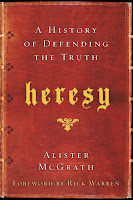There is no doubt that the early church was a textual community-- from receiving and reading texts they already had (e.g. the Old Testament) to writing texts on the faith to individual church communities scattered throughout the Roman empire. Not only was this noted by some second century writers, but pagan and Roman criticism of the church often focused on the church's writings and local persecution of Christians often involved the confiscation of their writings.
Alister McGrath writes in his book, Heresy: A History of Defending the Truth:
Yet, many early Christian manuscripts include more then texts that were later recognized as canonical New Testament writings.... Christians seem to have drawn on a variety of sources in developing their faith, some of which would have appeared strange to those familiar with the settled canon of Scripture.... It is becoming increasingly clear that the early Christian communities had complex theological and devotional loyalties, which is clearly expressed in their reading preferences.
These writings could be very diverse from one letter to another Gospel, as well as teaching things of a contradictory nature. One local Christian community had their texts to draw from while another church in another region of the empire had their texts. Moreover, there were some texts that appeared on the scene in suspicious contexts in which the date or the writer of the document was in question (e.g. the Gospel of Thomas).
Thus, it was inevitable that the church universal would need to decide upon a canon, a standard whose writings would be authoritative for the church universal. Without such a standard the church could not remain as a unified and universal body. The process of canonization was not always easy. Not every book that became part of the canon was decided without controversy. Nevertheless, a canon (a constitution of authoritative texts) was necessary. Thus heresy could arise if one based one's doctrine on non-canonical sources instead of the canon of the New Testament that was received as the authentic apostolic tradition.
But the books of the New Testament are diverse as well. But to what extent? And does the degree of diversity with the New Testament render the categories of orthodoxy and heresy unintelligible?
That is the subject of the next post.

No comments:
Post a Comment